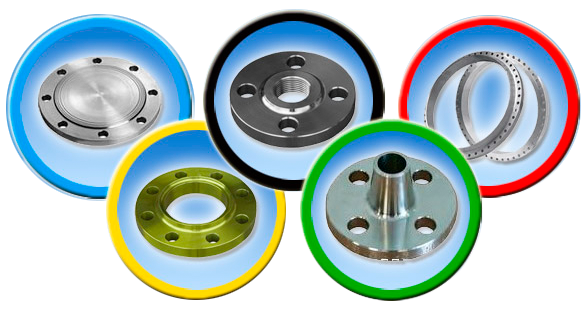Introduction to carbon steel flanges
Overview and advantages of carbon steel flanges
Carbon steel flange, which means that the raw material of the valve body is carbon steel, and the flange or flange end connector containing carbon steel raw material is called a carbon steel flange.
Overview of carbon steel flanges:
Carbon steel flange, that is, the raw material of the valve body is carbon steel flange or flange end connector. A flange containing carbon steel raw materials is called a carbon steel flange. Common raw materials include cast carbon steel trademark WCB, forged A105, or Q235B, A3, 10 #, 20 # steel, 16 manganese, 45 steel, Q345B, etc., Generally, to prevent rust on the surface of the flange, electric coating, or brushing with anti rust oil and spraying with anti rust paint are used.
The PN symbol has 12 pressure levels, namely: Class symbol has 6 pressure levels, namely: carbon steel flange. Another meaning is that according to national standards for flange scale, tolerance range, and other production requirements, the difference between the standard scale of flange production is also known as two standard flanges.
Generally, some unscrupulous merchants save data by reducing the thickness and outer diameter of the flange, and use scrap steel or scrap steel to process the flange. Generally, this type of steel does not have qualified scrap steel chemical composition and mechanical functions, and private individuals use black steel to produce steel flanges. Private individuals use old steel steelmaking technology to ensure mechanical and welding functions, and may not be able to use and weld the steel pipe, such as cracks appearing after welding Pores or steel itself can leak. So when buying flanges, try to choose carbon steel flanges as much as possible.
Carbon steel flanges are tight and reliable. It has two sealing surfaces, and the sealing surface of ball valves is widely used in various plastics, with good sealing performance and can achieve complete sealing. Carbon steel flanges can be used as a medium for suspending solid particles, as they have scrubbing characteristics when opened and closed. The Q41F-16C type Q41F-25C American standard A105 has a content of about 0.9%, while the GB 16Mn content is about 1.3%. Therefore, the Japanese standard S25C is relatively low at 0.6%.
What are the advantages of carbon steel flanges:
When welding carbon steel flanges, repeated heating is necessary to separate carbides and reduce their corrosion resistance and mechanical properties. Electrodes should be monotonous in application. Titanium calcium type should be monotonically dried at 150 ° C for 1 hour, while low hydrogen type should be monotonically dried at 200-250 ° C for 1 hour (do not repeatedly dry, otherwise the coating will break and fall) to prevent electrode flux from sticking to the skin. On oil and other dirt to prevent increased carbon content in the weld and affecting the quality of the weld.
Carbon steel flanges have a significant impact on the mechanical industry and have made significant contributions to economic growth. The forging process of carbon steel flanges produced by flange manufacturers can be divided into phase change forging, roll forging, rotary forging, and forging. Therefore, the development of carbon steel flanges has enabled the carbon steel flange forging industry to develop worldwide and even worldwide. Carbon steel flanges produced by flange manufacturers may be forged due to deformation, and deformation forging and ring rolling may undergo careful forging processes. In order to improve the utilization rate of materials, rolling and cross rolling can be used to process long materials, making it difficult to ensure the accuracy of forging.
The production of carbon steel flange blanks in cold forging can lead to deformation and work hardening, thereby subjecting the forging die to high loads. Therefore, high-strength forging dies must be used during the forging process to avoid wear and adhesion. Hard lubricating film needs to be treated. In addition, in order to avoid cracks in the blank of carbon steel flanges, a core annealing process is also required. This improves the deformation resistance of carbon steel flanges. Carbon steel flanges are flanges, steel rings, flanges, etc., set at the pipe end, and the flange is free at the pipe end. Therefore, it is necessary to use computers to control the target of the forging die and change the forging process, so that forging products with chaotic shapes and high accuracy can be obtained with lower forging forces.



